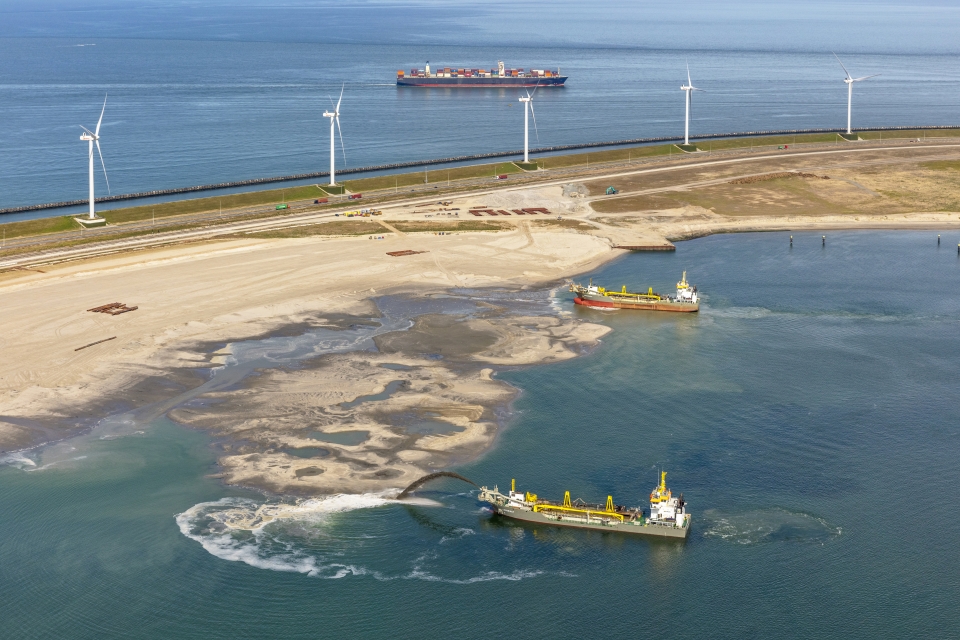Where would the Netherlands be without dredging companies, or, with a fancier name, hydraulic engineering companies?! Nowhere, because who builds our ports, canals and dykes, keeps our waterways at depth, reinforces the coast, restores beaches and dunes that have been washed away, and built our polders in the past and implemented the Delta Plan, and will continue to ensure that we keep our feet dry and that our harbours don’t silt up? Exactly, the hydraulic engineers.
The Dutch dredging companies are crucial, i.e. strategic, to the survival of our country and our economy. For that, you should not want to depend on a pernicious dictatorial regime that cares nothing for human rights. Moreover, it is completely backward if our governments spend our tax payments in China, which then steals away our companies and jobs. In defending our interests, dredging companies may not be on the frontline, but they are of strategic importance in maintaining our prosperity and well-being.
Working in dredging used to be dirty work if you see men sealing the last hole in the Afsluitdijk on impressive Polygoon newsreel footage. But for most workers today, it involves operating high-tech control panels in state-of-the-art control rooms whether or not on the bridge of trailing suction hopper dredgers and cutter suction dredgers built in all shapes and sizes in the Netherlands.
Also read: SWZ|Maritime’s January 2024 issue: An education and labour market special
The Vereniging van Waterbouwers (Association of Hydraulic Engineers) in the Netherlands unites all of the ninety companies active in building with water, sand and clay. All these companies need equipment that can be supplied not only by the big boys of Damen and Royal IHC, but also by many smaller shipyards. The Hegemann V built by Scheepswerf Gebr. Kooiman, of which a ship description is included in SWZ|Maritime’s February issue, is a fine example.
And the other four articles of this dredging special also give a good impression of the versatility and inventiveness of the Dutch dredging industry. It is for good reason that dredging is an important study topic at the Delft University of Technology (TU Delft).
Also read: SWZ|Maritime’s December 2023 issue: Finland leads the way in shipbuilding
The editors of SWZ|Maritime are happy with the efforts of the two students of the TU Delft’s maritime study association William Froude, Bas Lenferink and Roy van de Pol, who were responsible for bringing in and writing the articles in this dredging special. The articles are definitely worth reading.
This is editor-in-chief Antoon Oosting’s editorial accompanying the February 2024 issue.
SWZ Archive
Our digital archive is once again available to subscribers and they can read the digitial version of our February issue there. Subscribers can register here to gain access. Not yet a subscriber? Visit our subscription page.
Also read: SWZ|Maritime’s November 2023 issue: This issue is all about engineering
The articles in SWZ|Maritime’s February issue
In addition to the regular sections such as Dutch news, Markets, Global news, book reviews, news from the KNVTS and Mars Report, the articles in the January issue are:
- Shipbuilding in 2024
- Royal IHC presents next phase in autonomous dredging
- Depth or bottom
- Sustainable solutions for dredging vessels
- Hegemann V uses latest software in dredging control
- Detailed CFD simulations of sediment and water
- Duurzaam en economisch Waddentransport
- Scheepsgedrag simuleren met kunstmatige intelligentie
Picture: Boskalis dredgers Causeway and Strandway at work at the Maasvlakte in September 2023. Dredgers are at work continuously all over the world to keep ports accessible and protect land from the sea. Their job is never done (photo Flying Focus).
Also read: SWZ|Maritime’s October 2023 issue: Spread the word with this keepsake issue








